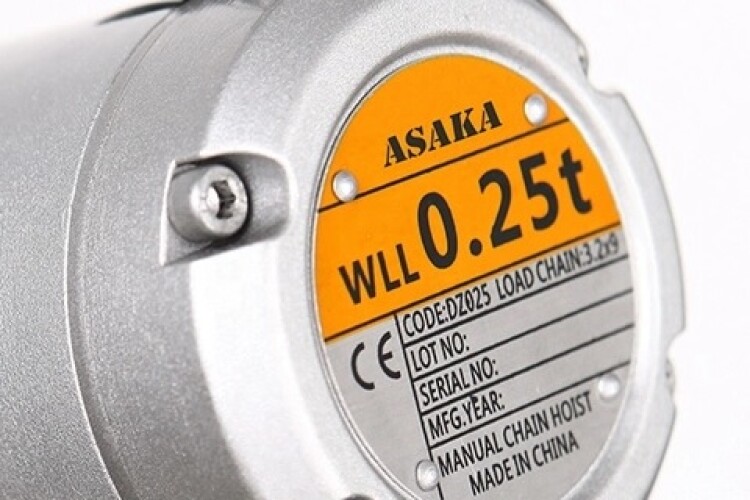Last week the Department for Business & Trade said that manufacturers in sectors that it regulates – including construction machinery – would no longer have to switch from Conformité Européenne, or CE, marking to the new United Kingdom Conformity Assessed (UKCA) mark.
However, the U-turn does not apply to building products, which come under the Department for Levelling Up, Housing & Communities (DLUHC).
DLUHC says that the CE mark will cease to be recognised for construction products in Great Britain after 30th June 2025. (As things stand, Northern Ireland keeps the CE mark for everything under the post-Brexit protocol agreed with the EU.)
DLUHC says that it is “committed to ensuring the testing regime for construction products is effective and inspires public and market confidence” and promises to set out proposals for reform of the construction products regime “in due course”.
The Construction Leadership Council has now issued its statement on the anomalous situation of different regimes for different products used in construction.
“We are working at pace with DBT and DLUHC on both the impact of the DBT announcement, and in relation to the development of the proposals for future construction product regulation,” it said.
“The aim is to ensure that there is clarity regarding the timetable for policy announcements on the future of construction product regulation to enable the whole construction supply chain to prepare for changes in the current regime.
“In addition, the CLC will continue to make the case that there should be a consistent approach across all industry sectors and products to CE mark recognition, and that this should apply to all construction products. The CLC will also continue to highlight that there is insufficient capacity within the UK testing system to apply the UKCA mark to all construction products from 2025, given the large range of products and costs involved. This would mean that some construction products will be withdrawn from the UK market from 1st July 2025, with a consequent impact on the delivery of infrastructure, home building and domestic retrofit products.”
The Construction Leadership Council is sponsored by the Department for Business & Trade and co-chaired by a minister from that department, currently Nusrat Ghani. The DBT provides the organisation’s secretariat, taking its minutes and issuing its statements. However, the CLC has no representatives from, or formal relationship with, the Department for Levelling Up, Housing & Communities.

The switch from CE marking to UKCA mark had originally been scheduled for the end of 2021 – a supposed Brexit dividend, “taking back control”. Having not been thought through properly, it then had to be delayed until the end of 2022 because there was not capacity to test and certify the countless products that were required to comply. The transition was then put back to June 2024.
Running in parallel with this process was Dame Judith Hackitt’s Building a Safer Future report into the lessons of the Grenfell Tower fire. This exposed shortcomings in product regulation in the construction industry. A follow-up report was commissioned by DLUHC from Paul Morrell, Testing for a Safer Future: An independent review of the construction products testing regime. Published in April 2023, this is what DLUHC is now chewing over.
Morell said that the transition to UKCA presented an opportunity to look anew at the regulatory system for building products.
However, he also said: “Divergence from the EU model does have consequences, however, and some of these will pose a considerable challenge. These include:
- the need for the UK to replicate the infrastructure for conformity assessment, setting national standards etc, with reliance on resources drawn from a substantially smaller pool;
- capacity constraints as a result of the above;
- the cost and disruption that comes from any regulatory change;
- the need for manufacturers who export from the UK or import to the UK to operate two systems, representing additional cost and a potential disincentive to both.
“Because of the cumulative effect of these, the indication of feedback received in the review is that the preference of manufacturers (or at least manufacturers with international operations, who will still be required to obtain CE marking, using the services of notified bodies accredited in the EU to export to EU countries) would be for a bilateral agreement with the EU that secures mutual recognition of conformity assessment systems; or for the UK to operate a system that shadows the EU, and continues to do so.
“It is, of course, possible that those who operate only in the GB domestic market will feel differently (and it is worth re-stating that about three-quarters of all products produced in the UK are used in the UK).
“It is therefore a case of weighing the challenges of diverging from the EU system (if indeed there is an alternative, as staying aligned would clearly be a matter for political negotiation) against the opportunities of doing so, considering the implications not just for all manufacturers, but also for their customers. Many other decisions flow from this principle, and there could be considerable disruption if the position on this particular issue is resolved only after the proposed changes to the regulatory framework for construction products have passed into law.”
Possibly a bigger issue than choosing a product certification regime is whether anyone bothers to police it or not.
Enforcement of the existing Construction Products Regulations – implemented in the UK in 2013 through EU regulation CPR305/11 – has been almost totally non-existent, Morell said in his report; “so that bad actors feel that they can bypass the regulations without consequence. As far we can determine, there have been no prosecutions under CPR305/11 since it was enacted.”
Got a story? Email news@theconstructionindex.co.uk



